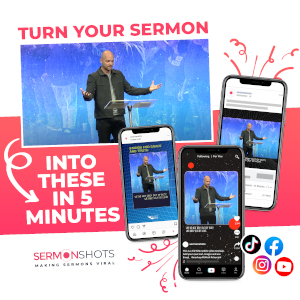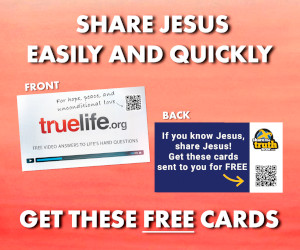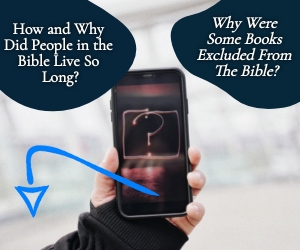The story of Jesus miraculously feeding five thousand men, plus whatever family members were with them, is found in all four Gospels. This should cause us to recognize that God must have an important message for us within these passages. This story is more than just a story about eating; it is more than just a story about food. Let us look closer at the biblical record to see what messages from God are contained therein. The following is the account gleaned from all four Gospels and melded into one.
The Setting
During the three years of Jesus’ adult ministry, He often walked the streets and countryside of the land and taught the people. Many times large crowds would gather to hear what He had to say. These crowds would follow Him for great distances and for long periods of time. It was at the end of one of these teaching sessions, towards the end of the day, that the story of Jesus feeding five thousand men took place.
We learn from Matthew’s account that Jesus had been healing the sick (14:14). Luke also says that Jesus was speaking to them about the Kingdom of God (9:11). John 6:2 tells us that many followed Jesus because they had witnessed the healings that He was performing. The day was growing late and evening was approaching.
The Situation
It had been some time since any of the crowd, including Jesus and His disciples, had eaten. The Gospel of John tells us that Jesus initiated the discussion concerning how the crowd would be fed, “Jesus went up on the mountain, and there he sat down with his disciples. Now the Passover, the feast of the Jews, was at hand. Lifting up his eyes, then, and seeing that a large crowd was coming toward him, Jesus said to Philip, “Where are we to buy bread, so that these people may eat?” He said this to test him, for he himself knew what he would do” (John 6:3-6 ESV). As He did many times, Jesus would use this situation to teach His followers a deeper truth concerning Himself and the Kingdom of which He was Lord.
Some of the disciples said that Jesus should send the people away to the city, in order that they might purchase food for themselves (Matthew 14:15; Mark 6:35-36; Luke 9:12). However, Jesus had other plans. He said to His disciples, “They need not go away; you give them something to eat” (Matthew 14:16; cf. Mark 6:37a; Luke 9:13a). Jesus told His disciples that they had the means to feed all these people. They must have looked at each other and wondered what Jesus was talking about. They did not have enough food with them, “Philip answered him, “Two hundred denarii worth of bread would not be enough for each of them to get a little” (John 6:7; cf. Mark 6:37b). Jesus’ disciples still did not fully realize exactly Who they were following, nor what He was capable of. Just as we so often do, they were focusing more on that problem than on the Solution, Jesus.
The Solution
The disciples continued to see the glass as half empty as they pointed out to Jesus that there was very little food available, “One of his disciples, Andrew, Simon Peter’s brother, said to him, ‘There is a boy here who has five barley loaves and two fish, but what are they for so many?’” (John 6:8-9 ESV). From a human perspective, they were right. Five loaves of bread and two fish certainly would not feed five thousand men plus any family members with them. If each one of the five thousand also brought a wife and one child, that would be fifteen thousand hungry people to feed! From the disciple’s limited viewpoint, there was not enough food. How often do we know what Jesus said about supplying our needs (Matthew 6:25-34), but we still do not have faith that He will?
Jesus instructed that His disciples bring the loaves and fish to Him. He then told the disciples to have the people sit down in groups of about fifty each. Even this must have tested the disciple’s faith. Jesus instructed them to have the people prepare for a meal. However, the disciples had no idea where the food would come from. Nevertheless, they did what Jesus told them simply because He told them to do it. It also might have been dawning on the disciples that they had been watching Him heal the sick all afternoon. Maybe, someone who could heal diseases was able to miraculously feed His hungry followers, too.
In all four accounts, Jesus gave thanks to God for supplying their needs. This should also be our attitude towards God. We are to give thanks to God for everything (Ephesians 5:4; Philippians 4:6; Colossians 4:2; I Timothy 2:1). We know that everything good comes from Him, “Every good gift and every perfect gift is from above, coming down from the Father of lights with whom there is no variation or shadow due to change” (James 1:17 ESV). Even the things that we think are bad, happen for our good and the glory of God (Romans 8:28 ESV). Therefore, we should approach God with an attitude of gratitude for all He has done, and is doing, in our lives.
The Savior
“And taking the five loaves and the two fish he looked up to heaven and said a blessing and broke the loaves and gave them to the disciples to set before the people. And he divided the two fish among them all. And they all ate and were satisfied. And they took up twelve baskets full of broken pieces and of the fish. And those who ate the loaves were five thousand men” (Mark 6:41-44 ESV).
What a wonderful picture of Jesus Christ, our Savior. He had been walking, teaching, and healing all day long. There must have been some who believed in His message and committed their lives to Him. However, there must have also been those scoffers and skeptics who mocked Him, ridiculed Him, or just walked away. By this time of the day, Jesus must have been physically worn out and hungry Himself.
Nevertheless, Jesus’ love for others moved Him to perform one more miracle that day. He met and quenched the physical hunger of those who had been following Him; and He did it in a way that not only showed His love for His followers, but in a way that showed that He could meet those needs easily and with plenty to spare (cf. Ephesians 3:20).
The Specifics [Applications]
How can we apply the story of Jesus feeding the five thousand to our lives as followers of Jesus? There are several lessons to be learned from this account:
We must always remember that Jesus is more powerful than any problem we might face. Instead of focusing on the problem, we should focus on our relationship with Jesus. We should remember that He said, “I have said these things to you, that in me you may have peace. In the world you will have tribulation. But take heart; I have overcome the world” (John 16:33 ESV).
Jesus cares about our spiritual needs, but also our physical needs. After Jesus spoke about our physical needs, such as food and clothing, He said, “But seek first the kingdom of God and his righteousness, and all these things will be added to you” (Matthew 6:33 ESV).
If we stay close to Jesus, we can be assured of His loving care. “If you abide in me, and my words abide in you, ask whatever you wish, and it will be done for you” (John 15:7 ESV). There is no limit to Jesus’ loving care for us. “Now to him [God] who is able to do far more abundantly than all that we ask or think, according to the power at work within us…” (Ephesians 3:20 ESV).
The account of Jesus feeding the five thousand is a wonderful picture of how much He cares for us, His desire that we experience His companionship, and His power to perform the miraculous and more. What a marvelous Savior we serve.
Looking for more Bible stories? Take a look at these articles:
Resources:
The Holy Bible, English Standard Version
“Scripture quotations are from The Holy Bible, English Standard Version® (ESV®), copyright © 2001 by Crossway, a publishing ministry of Good News Publishers. Used by permission. All rights reserved.”
YouTube video “Five Loaves and Two Fishes” by Corrinne May









 Welcome to What Christians Want To Know! The mission of this site is to equip, encourage, and energize Christians. Look for regular updates including Bible Verses, Bible Stories, Christian Quotes, Christian Answers, and much more. Find out
Welcome to What Christians Want To Know! The mission of this site is to equip, encourage, and energize Christians. Look for regular updates including Bible Verses, Bible Stories, Christian Quotes, Christian Answers, and much more. Find out 









